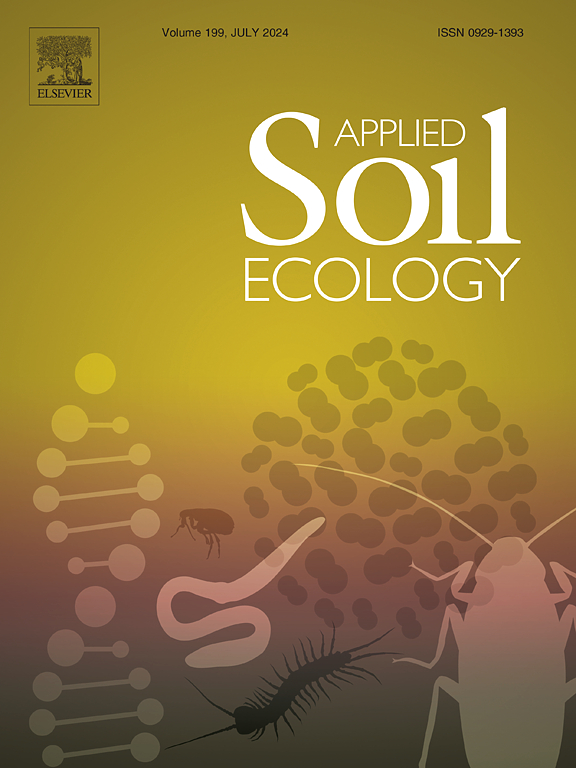Insect residual streams supplement improves chili pepper growth: Insights into the role of rhizosphere soil microbiome and metabolome
IF 4.8
2区 农林科学
Q1 SOIL SCIENCE
引用次数: 0
Abstract
Insect frass and exuviae represent typical residual streams of insect farming and demonstrate great potential for ameliorating soil properties and improving plant growth. Yet, the effects of frass and exuviae on the rhizosphere microbiome and metabolome remain unclear. In this study, we cultivated Capsicum annuum var. longum Bailey, a typical chili pepper variety, under fertilization with different concentrations and combinations of frass and exuviae from Corcyra cephalonica Stainton with the aim of elucidating the impacts of insect residual streams (IRSs) on the rhizosphere soil metabolic profile. We found that both frass and exuviae effectively raised the soil fertility and nutrient bioavailability and markedly improved the enzyme activities (i.e., catalase, β-glucosidase, urease, and alkaline phosphatase). Microbial community analysis showed that supplementation with frass and exuviae enriched potential plant-beneficial microbiota, such as Sphingobium, Steroidobacter, and Humicola, in rhizosphere soils. Meanwhile, frass and exuviae enhanced certain carbon and nitrogen cycle-associated functions (e.g., chitinolysis and cellulolysis) and substantially reduced the abundance of plant pathogens, as revealed by microbial community function prediction. Investigation of the rhizosphere metabolic profile showed that supplementation with exuviae or frass induced the enrichment of metabolites related to plant growth regulation, pathogen inhibition, and plant–microbiota interactions. Moreover, correlation-based network analysis revealed strengthened synergistic microbial cooperation under treatment with frass and exuviae. Finally, the ameliorated soil microenvironment improved photosynthesis and promoted chili pepper growth. We concluded that insect frass and exuviae facilitate chili pepper growth through modifying the rhizosphere microbiome and metabolome, in addition to promoting soil fertility. The outcomes offer novel insights into how plant–microbiota interactions are regulated by IRSs, providing practical implications for agricultural applications.

求助全文
约1分钟内获得全文
求助全文
来源期刊

Applied Soil Ecology
农林科学-土壤科学
CiteScore
9.70
自引率
4.20%
发文量
363
审稿时长
5.3 months
期刊介绍:
Applied Soil Ecology addresses the role of soil organisms and their interactions in relation to: sustainability and productivity, nutrient cycling and other soil processes, the maintenance of soil functions, the impact of human activities on soil ecosystems and bio(techno)logical control of soil-inhabiting pests, diseases and weeds.
 求助内容:
求助内容: 应助结果提醒方式:
应助结果提醒方式:


